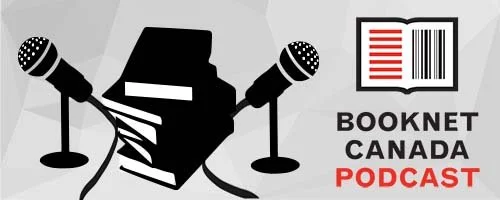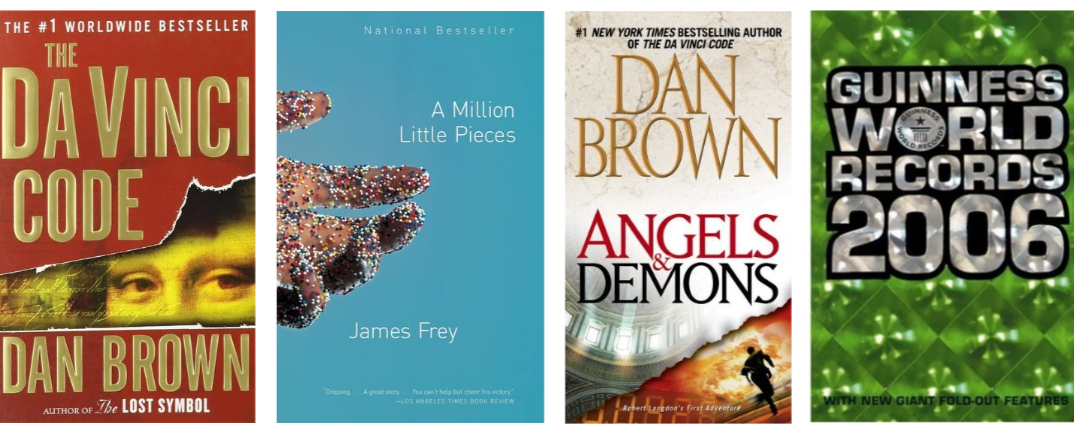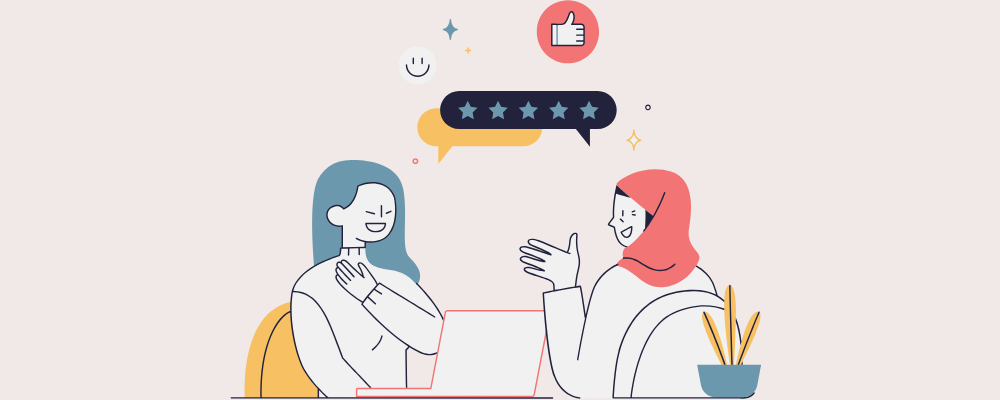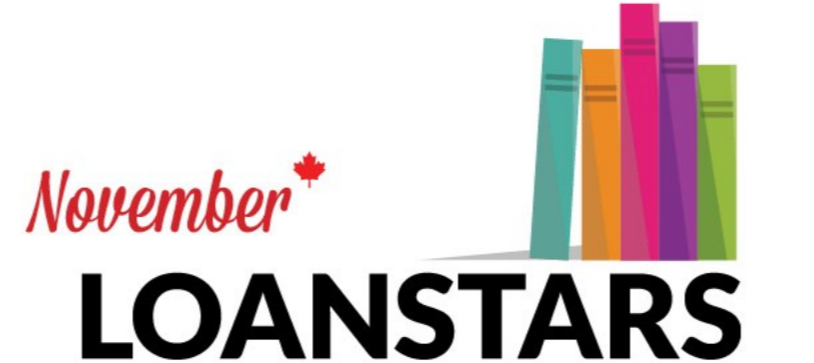This month we talked to Christen Thomas and David Stinson from CNIB Beyond Print about accessible audiobooks, braille, and more.
(Scroll down for a transcript of the conversation.)
Want to make sure you never miss an episode of the podcast? You can subscribe for free on iTunes, Stitcher, Pocket Casts, TuneIn, or SoundCloud.
Further reading/listening:
Transcript:
Adaobi Nnaobi: Welcome to the BookNet Canada podcast. I’m Adaobi Nnaobi, the Marketing & Research Associate and the host of this month’s episode. I had the pleasure of interviewing Christen Thomas and David Stinson from CNIB, The Canadian National Institute for the Blind. Christen is the Director and David is the Audio Publishing Manager of CNIB Beyond Print, one of Canada’s oldest and most experienced producers of accessible materials.
Okay. So, thank you both for joining me today. I'm very excited to learn more about CNIB. I've scoured your website, but of course, there's so much more to know about you guys. So, I wanted to start with, what is CNIB Beyond Print's mission and who do you serve?
Christen Thomas: Thanks so much for having us here today. Beyond Print is a social enterprise at the CNIB, and CNIB is of course the Canadian National Institute for the Blind. And we are advocates for born accessible, and the availability of accessible formats of books and information for Canadians with print disabilities. We are an alt format producer, and we offer consultation and production services, we create audiobooks, ebooks, braille, and print braille. And we produce accessible and commercial formats for CELA, which is the Centre for Equitable Library Access, for publishers, and for other organisations across the country. And we also help to leverage accessible content globally. While Beyond Print is a new entity, formerly known as Accessible Publishing, CNIB has over a century of experience producing materials in alternate format.
Adaobi: Great. So, let's start with audiobooks. Some people think that audiobooks are accessible by their very nature. But what makes an audiobook accessible, really?
David Stinson: Well, I'll also chime in and just say, first, you know, again, thank you for inviting us and for talking to us today. But let's be clear, audiobooks are not inherently accessible. A flat file is not the same as, you know, the reading experience of the print artifact. What is accessible is the DAISY format. So, simply put, DAISY allows for audio, in this case, MP3, to be presented in an HTML wrapper, which allows you to search everything about it. It allows you to have a robust experience.
Many readers with print disabilities prefer the DAISY format, which is fully navigable, and it can be enjoyed on various devices and applications. For an audiobook to be fully accessible, all of its visual content should be described, and the work should be complete, and include, you know, the front and the back matter. It should also have robust metadata that describes the product and helps when browsing and skipping through the text or trying to find whatever you're trying to do.
There are best practices that you can apply to create commercial audiobooks in WAV or MP3 formats that make them accessible as possible, but they lacked the same navigability that DAISY gives you. We, at Beyond Print, we support the Canada Book Fund's checklist in creating commercial audiobooks. We meet those standards in our production, you know, every day. And we also advocate for DAISY and ensure that any project that we're working on includes that format and is circulated to readers with print disabilities through the CELA.
Adaobi: That is much more than I knew about the difference between an audiobook and an accessible audiobook.
David: Yeah, that's a big part of my job.
Adaobi: So, audiobook production is known to be expensive. Are there ways that an accessible audiobook can be created on a budget?
David: Sure, yeah. There's so many options, right, that impact audiobook production costs. And so, let me just break that down a little bit for a second. One of the most expensive things in creating an audiobook is pure studio costs. And that's a discrepancy in the way that things are billed. Video is regularly billed by the hour while audiobooks are paid by the finished recorded hour. So, right there, you have a discrepancy in just pay scales.
Then there's the cost of hiring a professional group, voice actor, or actors. We're lucky, right? We have lots of skilled and trained volunteer narrators who are passionate about what they do and who work with us. We also have the option of partnering with ACTRA for, you know, if you want, which it does of course at an additional cost. If the publisher provides the image descriptions and pronunciation research where applicable, this reduces the cost with us as well as it reduces the work we're doing for the client.
Quick answer long, to cut costs in audiobooks the publisher or creator needs to do the work upfront, right? You need to have your language and pronunciation research done ahead of time, you have to record in a good-quality room with good-quality equipment. There is no way of making that cheap. It is what it is. A recordist or a producer who will keep you honest and moving is absolutely priceless. Most people can only record for about 3 to 4 hours a day, you're only gonna get, 1.5 to 2 hours of useful audio after the editing. We're very lucky that our volunteers have a lot of experience and can do both, you know, record for longer periods of time, but also do so with remarkable accuracy. It's one of the reasons that publishers come to us. We've been very fortunate.
Adaobi: Interesting. So, what I'm hearing is that to get the efficiency and the overall quality that you want for an accessible audiobook, you kind of have to be willing to spend a bit more?
David: No, no, not necessarily. As I said, you have to do the work upfront and you have to go into it with your eyes open. You know, before I worked at CNIB, I've done work for independents, and I've done work for big international conglomerations. You know, to be honest with you, you can spend as much money as you have, but you have to come about it in a reasonable manner. People think that audiobooks are expensive simply because they don't understand the value that all the different pieces of the puzzle create. As I said, studios are expensive because they bill by the hour, they don't care about your finished hour, you need to record there and you need to record as cleanly and efficiently as possible. So you're going to pay for a qualified technician or editor or whatever to do that with you. If you come in and or whoever you hire to read is not an efficient reader, if they're very slurry, if they make a lot of mistakes, that adds to your cost because all of that has to be edited and sorted out, and cut down.
Adaobi: Okay. I think I'm getting what you're saying now. But just one more question on this...
David: Sure. Sure, of course.
Adaobi: ... just to make sure I get it. So, if a publisher were to come to you, and say, "I have..." And I'm not even gonna say a number, but “I have, like, this particular amount of money set aside for this project." I guess, would it then be a case of sourcing out the people who can make that run, like smoothly and still work within those constraints?
David: All right. So, if they're coming to us, we can make that happen. Because A, we're a volunteer organization, we're doing it to put into the library. That's our focus. But then we'll also create a commercial book as well. You know, we have a great crew of producers and researchers and everything else, we have people already there who do this day in, day out. So, you're not going to a recording studio that normally does jingles or commercials or something like that and trying to fit it in in their off time.
Christen: And we can definitely work with publishers on a budget by suggesting the options that are most cost-effective. So, one example, as David was talking about, was working with our volunteer narrators, rather than hiring actor members who are unionized and have professional dues. And our volunteers are very skilled and awesome. And they can do an excellent job on the project. And that will be one savings that can be realized. Another savings could be if we can get the publisher or the author to help collaborate around any pronunciation support, research, or image description.
David: Image description. Yeah, exactly.
Christen: Because if we're providing those services, we're gonna need to bill for the time, but often our clients can do that work for us, and that will bring down the cost as well. So, we're happy to work with publishers with different budgets, and we can definitely suggest options that will help meet what's available in terms of resources for the project.
Adaobi: Yeah. That sounds great to me, and I'm happy to hear that it seems like a very collaborative effort with everyone involved. Can you talk about your braille transcription services? Who can request them and how long does it usually take?
Christen: Yeah, definitely. So, we can provide braille transcription of different kinds of printed documents. So, for example, we can transcribe letters or invoices, restaurant menus, certificates, meeting agendas, and reports. And anyone can request the service, it's a public service. We have a braille portal on our website, I can provide you with a direct link to that portal. If you are a CNIB participant, a braille user, or an individual looking to create accessible braille documents, for a braille user, our transcription services may be complementary. In that case, we would require a CNIB client number. And for other business inquiries, we would be providing a quote once the request was assessed.
In terms of timing, the processing depends on a variety of factors such as the complexity, the size of the document, the finished format being requested. So if it's just the braille electronic file, that will be faster than if the embossed printed braille is required. And finally, the other consideration around timing is shipping. So it depends where we are providing the document.
Adaobi: Okay. So, I think you've mentioned something that I also wanna pick up right now because I don't know that much about braille. So, what is the difference between braille embossing and braille transcription?
Christen: That's a great question. I think of braille transcription as the art of translating text to dots. And braille transcription software creates a digital braille file, which can be read using a refreshable braille display, or it can be embossed. And embossing is the process of making a hard copy on special paper. And it's done by a braille embosser, which is basically a printing machine that embeds the raised dots onto paper for you to feel. So, the use of these whether it's the transcription file or the hardcopy embossing is really a personal preference, depending on the reader, and depending on their access to an embosser or to specialized software.
Adaobi: Great, and, what would be the difference between contracted braille and uncontracted braille? CNIB offers courses for both.
Christen: Another great question. So, uncontracted braille is a letter for letter transcription from print. So, each set of dots would represent one letter. And contracted braille includes more of a short form or a contraction for commonly occurring words or groups of letters. And I'm gonna give you a couple of examples. So the word, ‘be’ is often represented as a single character in contracted braille. And sometimes the difference between the two is really significant. So the word, 'altogether' if it was in uncontracted braille would take up 10 symbols or different braille cells. But in contracted braille, it would only take up three.
And now in terms of what print readers can gain from reading braille, a sighted reader could be learning braille for themselves, or to support someone else. For example, a parent or family member with a blind child, a teacher of the visually impaired, or someone may be interested in doing braille transcription work.
Adaobi: Okay. So, what are your consultation services for publishers?
Christen: We can provide publishers input on accessibility best practices, such as on alt text for images, on process or workflow, on formats, and more. So, for one example, we received some queries about EPUB code in the past, where we were able to help advise, not on the full project, but on some specifics in that file. And we can also assist with performing accessibility reviews on documents to prepare them before they become another format. So, audio, EPUB, and so on.
David: So, and you know, specifically, on the audio side of it, we can take the text and we can provide publishers with an outline of how long this is going to take, do the math for them, and provide again as Christen just said, best practices but also help them with their image description work.
Adaobi: So, I was wondering, publishers are producing more born accessible ebooks and audiobooks in-house or they're outsourcing them. Where does this leave CNIB Beyond Print?
Christen: Ultimately our goal is not to need to exist. We wanna have a completely born accessible publishing industry, and also for organisations and content creators in general, to be really proactive in providing all readers access to the information, books, and magazines in all preferred formats that readers would like from the get-go. And we're really thrilled that Canadian publishers are achieving Benetech certification with the help of eBOUND Canada to make their EPUBs fully accessible and we're glad that more of them are being released at the same time as print. Still today, there's fewer audiobooks and braille editions released and when they are sometimes they're much later than the print publication. We know that many readers with print disabilities often prefer audio as well. Currently, less than 5% of Canadian books are available in accessible formats, and 10% of the Canadian population has print disabilities. So there's still a lot of work to be done.
David: I'm just gonna jump on this just at the end. And I'm not trying to pick a fight but publishers are not necessarily producing more born accessible books. I mean, yes, they are doing stuff with eBOUND and stuff like that. But if we're talking about audiobooks, they're still producing books that are flat MP3 files to play on a distributed service.
Adaobi: Yeah, I think that's an interesting point. I see that as well. Because usually when we're talking about born accessible, it is usually ebooks...
David: Sure.
Adaobi: ...and not as much audiobooks.
David: And that's completely fine. You know, as Christen said, it really is our goal not to have to exist, which I know sounds weird, but it's true. But if the listener, or if the reader, if you will, wants to have a book read to them by a human and have that human experience and have that wonderfulness in their ears, then it's not just a flat MP3 file, it needs to be DAISY, it needs to be fully accessible.
Adaobi: All right, thanks. The CNIB Beyond Print website was recently redesigned. Why was this change important?
Christen: We had three reasons to redesign our website. The first was providing people with a better experience, whether they're clients or community, we wanted to really incorporate updated and targeted content to help people learn more about us and our service offerings and to really improve the site navigation as well to help clients or potential clients find what they're looking for. We also wanted to enhance accessibility on our website, we wanted to improve the accessibility features, ensuring it was more inclusive and usable for individuals with sight loss and/or print disabilities. And finally, it was part of a brand evolution, we wanted to align our visual design and messaging with CNIB's current brand identity. We wanted to reflect the revolution as a service provider over the past century, to embrace the new visual identity to really match the modern business and born accessible advocate that we've become today.
David: It also looks cooler.
Christen: Right?
David: And it gives publishers and those curious about what it takes to make accessible materials a resource and an easy way to ask questions if needed.
Adaobi: That sounds great. Now this is the last question. It’s an open question and I would like to hear from both of you on this one. What does making books accessible for everyone mean to you and what does it look like?
Christen: I love this question. For me, making books accessible for everyone means having formats available for all readers' preferences, from DAISY to commercial versions of audio, to EPUB, to braille transcription, and embossed braille. It means working towards born accessible where alt formats are released at the same time as print. And ultimately, to have accessible formats in all places that print books can be found. So, libraries to bookstores to online platforms. Accessibility shouldn't be a second thought, it should be integrated into workflow, so that for example, as part of manuscript development, visual elements are described by the content experts rather than being researched post-publication. It shouldn't be an afterthought. And I feel that literacy and reading is really a fundamental human right. So, anyone creating content has a responsibility to make it available to everyone.
David: Well, ditto to that, I would just add that it's easy for us to sit here and recognize that literacy is a human right, but it's also key to survival, right, in our increasingly difficult and nuanced world. Those with a print disability don't want handouts, they want what a sighted person simply has. Born accessible means that whether you're blind or dyslexic, or just process information differently, there's a way for you to consume media, and in this case, great Canadian books, and be, you know, vibrant in an informed society.
Adaobi: Similar to what I believe as well and I think a lot of people. How long do you think it's gonna take for us to get there? And I don't want a number or anything, because I don't expect a number.
Christen: So, I'm an optimist, so, let's put that caveat in place. I know by 2025 Canadian publishers will probably mostly all have born accessible EPUBs. And that's a great start. And that's because of the legislation in Europe that's going to mandate that, and that's obviously focused on one format. But I think there's been a lot of awareness raised thanks to organisations' work and publishers and advocates to bring accessibility into everyone's priorities and having that dedicated funding from Canada Book Fund from I think it was 2019 to 2024, has really helped support digital accessible projects.
So, going ahead, I think sustainable funding is key because we know that this work is expensive and we know that it's important. So, I'd love to see the Canadian government recognize their promise to increase the Canada Book Fund for the first time in over 20 years, and I think some of that fund could help with audiobook production, with braille. I think there's other ways to find sustainable funding as well. So, it's something we're thinking about on the advocacy front. So, I'd love to say by … I don't know, I'm pulling numbers out of the air, by 2040, we would finally have, you know, complete born accessible. but it's gonna take some work, and hopefully, it can be sooner.
David: I'm normally a pessimist, but I like Christen's optimistic outlook. I think the key point in, you know, trying to prognosticate what the future looks like, is we have to look at literally what's just happened in the last year, we've seen AI suddenly leap to the forefront. And that's going to change, it's going to impact a whole bunch of industries, it will definitely affect publishing, it'll affect media in all kinds of ways. So, there will definitely be positive repercussions and there will probably be some challenges as well with that. So, 2040 sounds like a great number, fingers crossed for that.
Christen: And now that you mentioned AI, I wanna say it should be even sooner because ChatGPT and AI voices are gonna exponentially improve. We know that and we wanna take advantage of the opportunities of technology in our work for sure. Like, right now, what's out there in terms of synth and AI voices isn't quite comparable to human voice. We do use synthetic voice for backmatter and for certain kinds of content. But yeah, I forgot about all of the gains we've made in technology just over the last couple of years. And that's gonna grow pretty quickly. So, maybe we can look at born accessible before then if we can get technology and AI to improve enough and fast.
Adaobi: Yes, like David said, fingers crossed. Thank you Christen Thomas and David Stinson for joining me to talk about CNIB Beyond Print and all the wonderful services you provide.
BookNet Canada acknowledges that its operations are remote and our colleagues contribute their work from the traditional territories of the Mississaugas of the Credit, the Ojibwa of Fort William First Nation, the Anishinaabe, the Haudenosaunee, the Wyandot, the Mi’kmaq, and the Métis, the original nations and peoples of the lands we now call Beeton, Brampton, Guelph, Halifax, Thunder Bay, Toronto, and Vaughan. We endorse the Calls to Action from the Truth and Reconciliation Commission of Canada and support an ongoing shift from gatekeeping to spacemaking in the book industry.
We'd also like to acknowledge the Government of Canada for their financial support through the Canada Book Fund. And thanks to you for listening.














The latest news out of the European Commission.